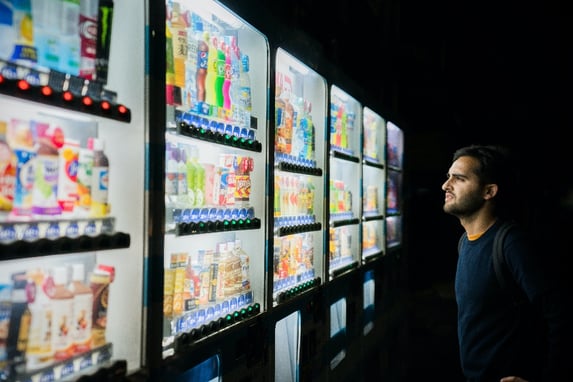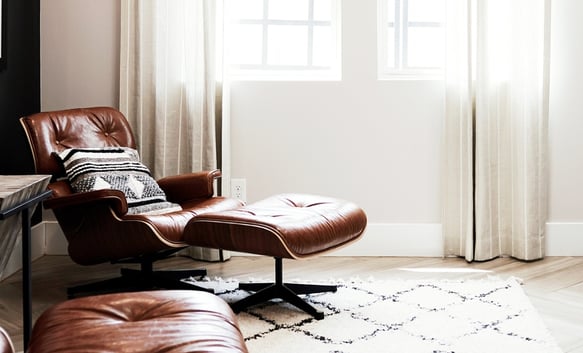
The food and drink sector is a notoriously crowded and competitive market and having visually attractive packaging can really set your product ahead of its competitors. Packaging needs to do more than just keep your product safe and unspoiled. It needs to catch the eye of the consumer and make them go for your product when faced with an often overwhelming number of similar choices.

Packaging needs to catch the eye of the consumer
What can you do to protect the time, effort and resources that go into creating successful packaging? There are a number of different avenues of IP protection available to you.
One of the quickest and most cost-effective options is one that is often overlooked – a design registration. Here is the answer to some questions you may have about how a design registration can be used to protect your look.
What is a design?
In essence, the ‘design’ of a product relates to its appearance, rather than to any technical aspects of its function or operation. Generally, this is the shape of a product or any ornamentation applied to it. Designs are used in a wide variety of different sectors and industries, ranging from industrial design, product design and importantly to packaging design.
To be registrable, a design must satisfy two criteria. It must be “novel”, i.e. no other identical design must exist, and it must possess “individual character” in that it must produce a different overall impression on the ‘informed user’ to any other design available to the public.

A design must be "novel" and possess "individual character" such as the Eames Lounge Chair
What aspects of packaging can be protected by a registered design?
There is a very broad definition of what is registrable as a design and it need not be the whole of the product, it can just be one specific part. Features that can be protected include:
- Product packaging as a whole;
- Lines, contours and the shape of the product;
- Colours and patterns;
- Texture and/or ornamentation; and
- The ‘get-up’ of the product.
One or all of these elements can be protected as a registered design provided that it satisfies the criteria above. This is great as it means that whatever it is that makes your packaging ‘stand-out’ has the capacity to be protected.

Colours and patterns are among some of the packaging features that can be protected
Where can I protect my design?
A key consideration when contemplating design protection is where you would like the product to be protected. If you only want to stop copying from taking place in the UK, a UK registered design right may suffice. If, however, you want to protect others from infringing your design in all EU countries, EU-wide protection (called a registered Community design) is available.
What legal protection is afforded?
A registered design gives the owner of that design the exclusive right to make, use, sell, import and export any product embodying or bearing the design.
Crucially, this a “monopoly” right, i.e. a right to stop any 3rd party from using the design even if they created this independently and did not explicitly copy your design. So long as the product bearing the design does not produce a “substantially different impression” on consumers, it will infringe your rights.
This can be very important in stopping ‘knock-off’ or lookalike products creeping into shops next to your product and affecting your sales.
Why could this be of value to me?
Designs undoubtedly influence the decisions that we make as consumers—why we chose one product over another.
When faced with a number of similar products in shops, aside from any other considerations such as cost and brand loyalty etc., consumers are influenced by the designs of product packaging and it can add a great deal of value to your product.
What if I’ve recently launched a product and want to protect its design?
Fear not! You are allowed up to one year from the date your design was first made public before you have to register it.
How can I get a design?
To obtain a registered design, you need to file a formal application at the relevant Design registry. Expert guidance on the application process can be offered by patent and trade mark attorneys.
How long does it take?
For both UK and Community Designs, the time taken to get a design registered is comparatively quick, especially when compared to other IP rights. An application does not need to go through a lengthy examination process which, for example with patent applications, can take many years to be completed, nor is there a possibility for any third-party opposition or intervention.
A result of this is that formalities, administrative burden and therefore costs are kept to a minimum. This makes registered designs more affordable and more readily available to small-and-medium sized enterprises.
How long does protection last?
Granted UK or Community registered designs can last up to a maximum of 25 years. To do so, they must be renewed (through the payment of a fee) every five years.
Registered designs vs trade marks – which should I go for?
While there is some overlap between registered designs and trade marks, both of which have the possibility of protecting 3D products, the elements of your product they can protect does vary and each comes with its own advantages and disadvantages.
Designs clearly cannot cover words or sounds, which can benefit from trade mark protection. Also, if the shape or pattern of the item is dictated by its function, and it is that which gives value to the item, then it cannot be a trade mark
Looking at a chocolate bar, for example, a trade mark registration would be more suited to protecting the name and any logo of the product. Registered designs, on the other hand, may be more suitable in protecting the “look”, the “get-up” and the design of the packaging.
Can a design registration be used to protect the look of my product packaging?
Absolutely, yes. As has been explained, registered designs are a really useful way of protecting the look, style and shape of packaging and is definitely something to consider.
Joe is an associate and a member of our trade mark team. He has an LLB Law degree from the University of Manchester and LLM in Professional Legal Practice from the University of Law, which encompassed the Legal Practice Course. At both undergraduate and postgraduate level, Joe completed modules on Intellectual Property law, which focussed on trade mark law and practice. Joe previously worked in the Business Crime and Regulation department at a solicitors’ firm on a high-profile criminal case.
Email: joe.mcalary@mewburn.com
Sign up to our newsletter: Forward - news, insights and features
Our people
Our IP specialists work at all stage of the IP life cycle and provide strategic advice about patent, trade mark and registered designs, as well as any IP-related disputes and legal and commercial requirements.
Our peopleContact Us
We have an easily-accessible office in central London, as well as a number of regional offices throughout the UK and an office in Munich, Germany. We’d love to hear from you, so please get in touch.
Get in touch

